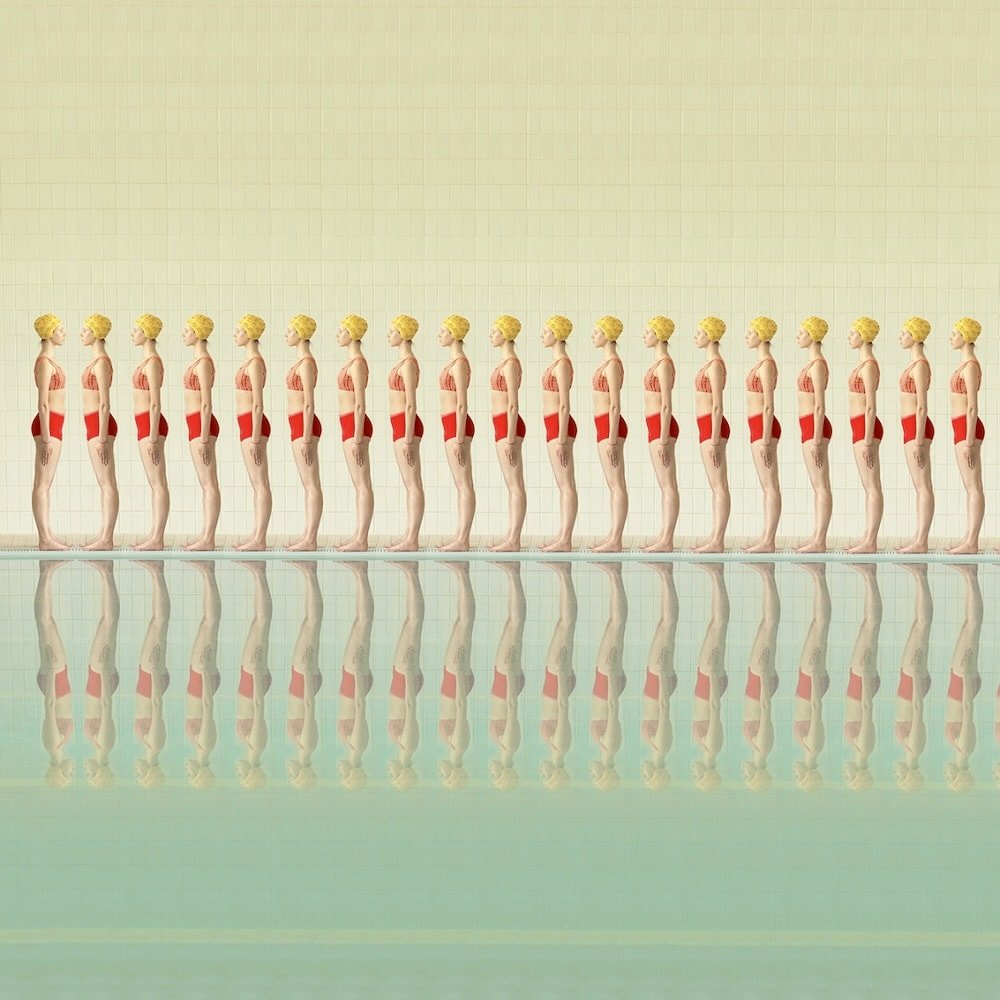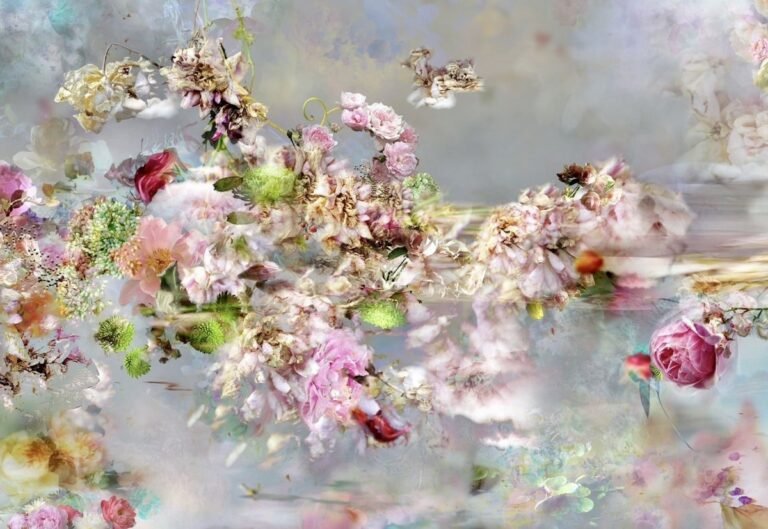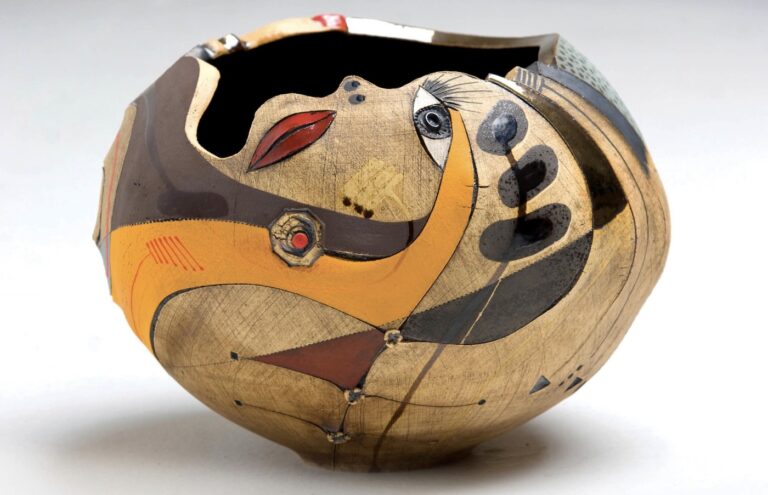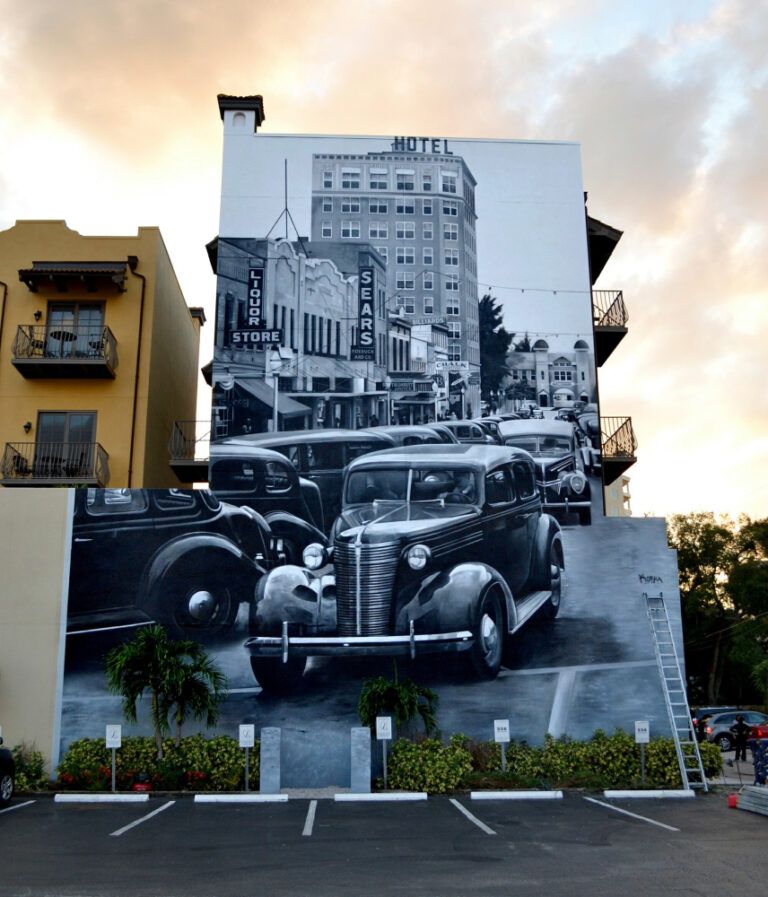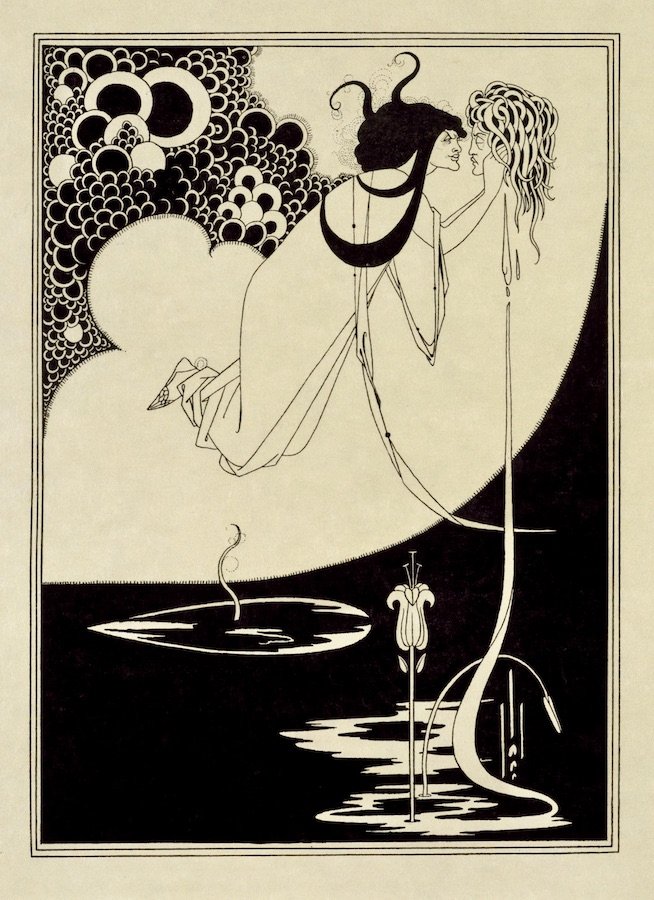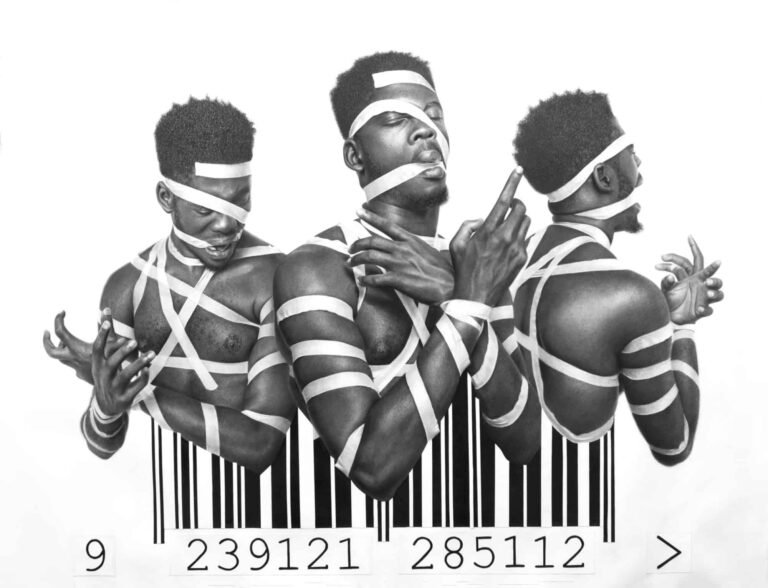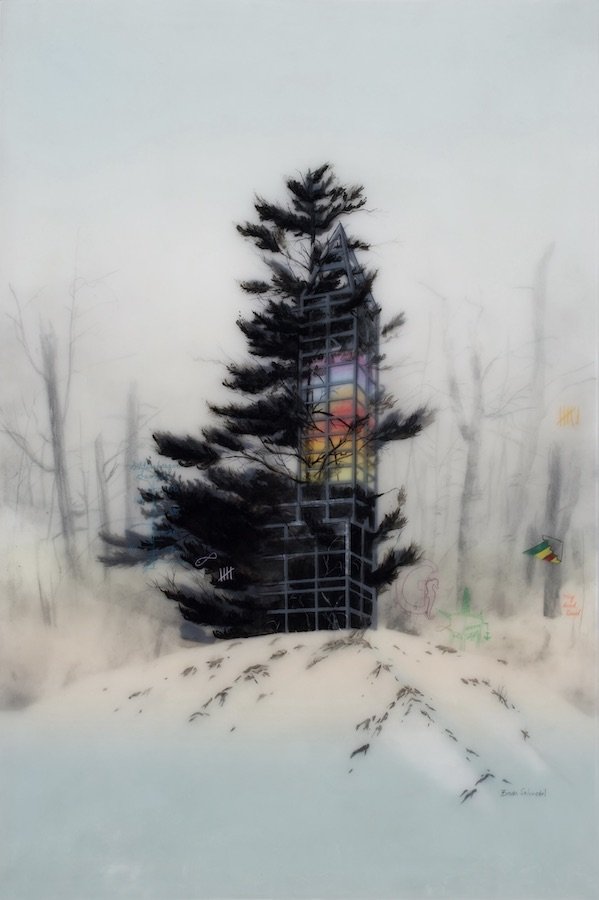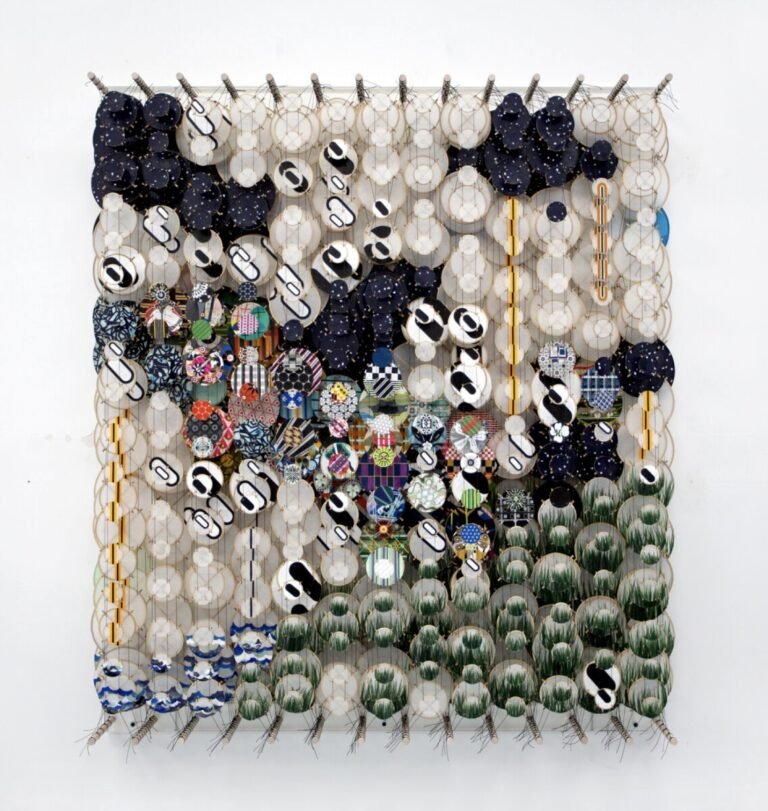There is a softness to Mária Švarbová photographs, the palette fitting together even as it contrasts. It’s like a pick n’ mix of elaborate interior designs of the 50s, to the more striking clothing colours of the 60s, the styles overlapping in their transition, while speaking of luxury and cultivated tastes, where time was spent more on how to make something beautiful than necessarily practical.
Švarbová’s photographs have a distinctive offbeat track to them, like an empty movie set, the figures posed inside like dolls and in this way they’re unnatural, and yet the two can’t exist without the other. They inform one another – how a space should work, how a person should be in that space. Especially in the series Plastic People, The Butcher and in Swimming Pool – here the models are exaggerated in their moves and an emphasis is made about the space’s scale, while the colours are digitally manipulated to be bold in one, to then being like an aged poster in another. Both equally stunning, whilst commentating on time; providing a then, now and tomorrow.
Having found inspiration in the setting of communist-built pools and public spheres in Slovakia, there’s a sense to Švarbová’s images of the socialist era’s influence. The images in the series Origins exploring our relationship to symmetry and order, while there’s a touch of uniqueness; seen when one of the model’s outfits is different, or when they turn to face the crowd. Here they’re both a part of society, while standing apart from it.
There’s a great deal of mirroring in Švarbová’s images, creating a sense of tranquillity, and even coolness to them with a palette of pastels. The scenes are manufactured, but like the icing on a cake you can’t help but want more. When this is exaggerated further with a kaleidoscope of reflections, there’s a degree of an optical illusion about them, making it feel like a Rorschach inkblot test – just what do you see, and how does it make you feel?
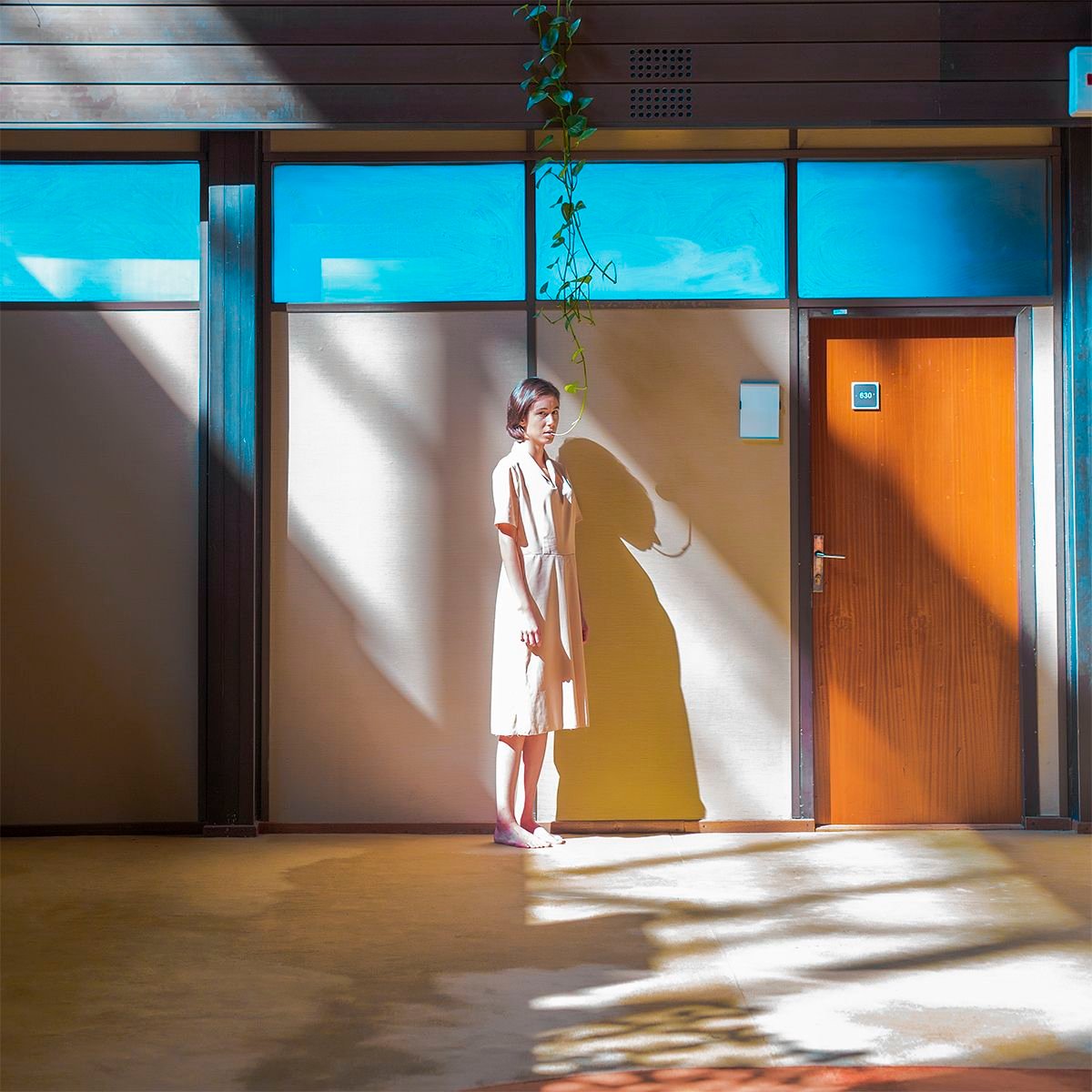 Untitled, 2015. Series: Human Space. Mária Švarbová.
Untitled, 2015. Series: Human Space. Mária Švarbová.
A slow calm extends over Švarbová’s photographs, the urgency and hustle in modern life removed, the scenes in her images outside of it – time has been carefully poised, and told to hold everything still while the timer goes off. This is particularly clear in the series Human Space. It feels like a magic show, you want to see behind the scenes of Švarbová’s photographs, to know what the architecture and emotionless dolls are really like, but also, like a good show, once the secrets are revealed the magic is lost. The photographs producing a sense of pretence: Do the models exist? Or are they mannequins, placed there for their prettiness? But no, for with just one photograph; where the model’s eyes look directly at the camera and thereby at you, you see the models are real and their presence is felt – they exist. This heightens the meaning of the other images; where the models look off to the sides as though they are unaware of you, just as you have been of them, the plants left to grow around them like statues. A sign possibly of isolation and loneliness? While these images as a collective form a sense of the people that lived and worked in these empty rooms, and though time may take back what was once there, they also hold memories of being vibrant and used.
Mária Švarbová images invite you to be aware of yourself, society, and space, both as a collective and individually.

